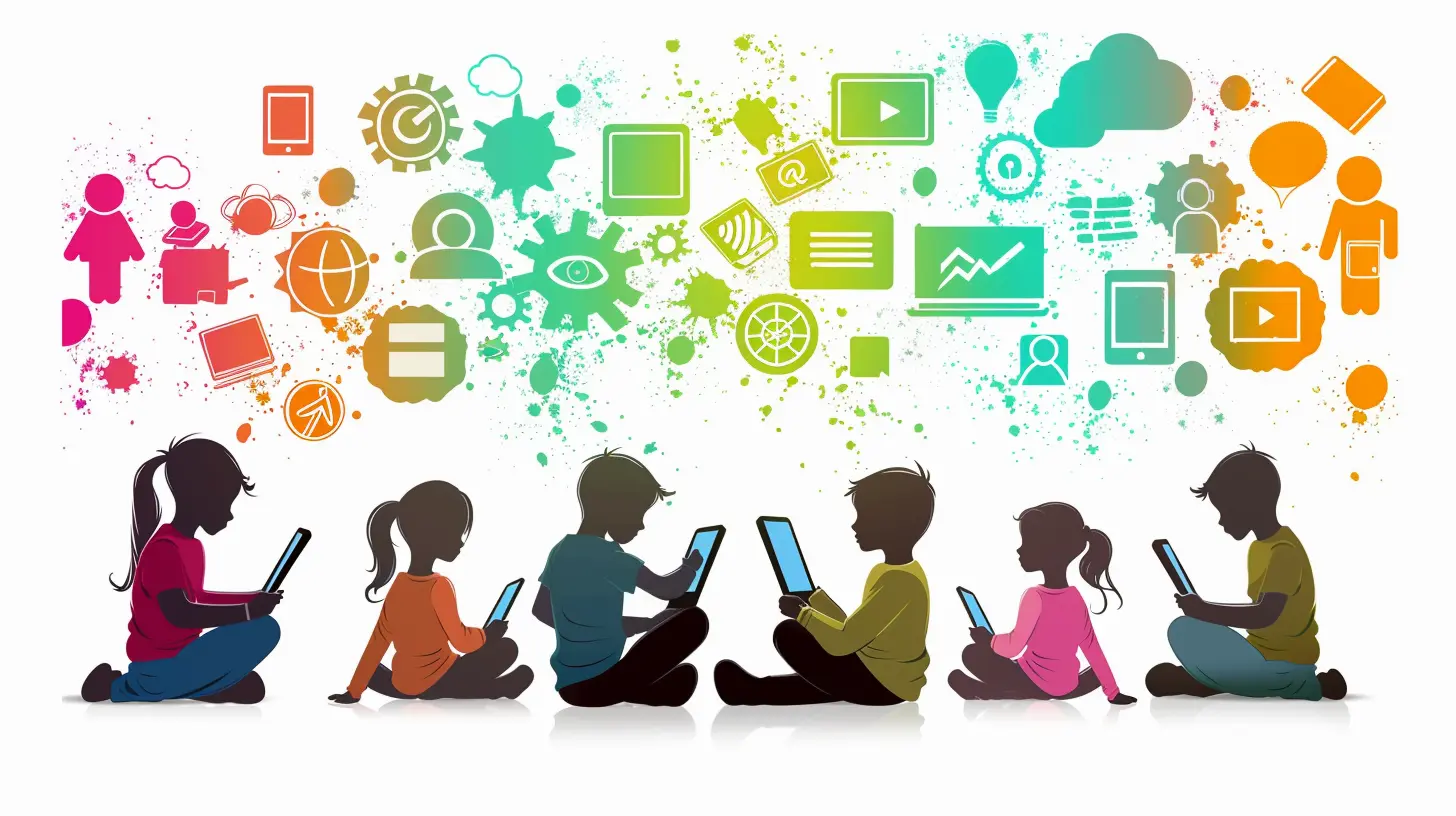The Role of Parental Involvement in Blended Learning
9 October 2025
Blended learning has become the buzzword in education today. If you’ve been around schools or even virtual classrooms lately, chances are you’ve heard this term thrown around quite a bit. And it’s not surprising—blended learning combines the best of both worlds: traditional face-to-face classroom instruction and the flexibility of online learning.
But here’s the thing that often gets overshadowed: parental involvement.
Yes, we get caught up in tech tools, lesson plans, and online platforms. But who’s helping kids stay on track at home? That’s where parents (and guardians!) come in. Their role in this hybrid model of learning is not only valuable—it’s absolutely critical.
Let’s have a real talk about what parental involvement actually looks like in a blended learning environment and why it can make or break a student’s success.
What Is Blended Learning, Anyway?
Before we dive deeper, let’s clear up what blended learning really means.Blended learning isn’t just giving students a laptop to finish homework. It’s a thoughtful mix of in-person teaching and online tools that support learning anytime, anywhere. Kids might spend part of their week in a physical classroom and the rest learning from home or another location online.
It’s like combining your favorite home-cooked meal with drive-thru convenience—you get the richness of traditional teaching without losing the flexibility online learning promises.
But flexibility can be a double-edged sword, right? Without some structure, students can easily get overwhelmed, distracted, or even lost in the process. That’s exactly why having parents involved makes such a huge difference.
Why Parental Involvement Matters More in Blended Learning
Let’s be honest—learning from a screen isn’t always easy. Even with the best teachers and coolest apps, students still need encouragement, structure, and someone to cheer them on (or give a little nudge when they’re falling behind).That’s where parents play a super important role.
1. Providing Structure at Home
One of the biggest challenges kids face with blended learning is managing their own time. Imagine being 12 years old and trying to plan your study schedule alongside Fortnite tournaments. Not the easiest combo, huh?Parents can help by creating a routine. It doesn’t need to be rigid, but it should give kids a consistent structure: when to study, when to take breaks, and when to unplug from screens.
Think of parents as the co-pilots in the learning journey. They’re not flying the plane—that’s the teacher’s job—but they help navigate through turbulence.
2. Creating a Learning-Friendly Environment
A noisy house, a cluttered table, or a lack of internet access can kill focus fast. Parents can step in by preparing a space that minimizes distractions and supports concentration.It doesn’t need to be a Pinterest-perfect study room either! Even a quiet corner with good lighting and a comfy chair can do wonders.
Plus, let’s talk tech. In blended learning, a reliable internet connection and working devices are non-negotiable. Parents who can troubleshoot or advocate for resources from school can prevent a lot of stress.
3. Keeping Students Motivated
Motivation is tricky—especially when students are left to learn independently for hours. That’s where parents can really shine.Simple things like checking in, asking about what they learned, or celebrating small wins can keep kids engaged. It’s not about hovering or micromanaging. It’s about being present and showing that you care about their progress.
Because here’s the truth: students are more likely to stay motivated when they know someone’s rooting for them.
4. Bridging the Communication Gap
Teachers can’t be everywhere at once. They might not always know if a student is struggling at home unless someone tells them. That someone? Often the parent.By staying in touch with teachers—whether through emails, online platforms, or school apps—parents can provide feedback or raise concerns early on. That kind of communication is priceless in a blended learning setup.
The Different Faces of Parental Involvement
It’s important to understand that not all involvement looks the same. Every family is different, and parental engagement can take various forms based on circumstances.Here are some key ways parents contribute:
The Tech Assistant
Some parents roll up their sleeves and help kids navigate online learning platforms, fix minor tech issues, or even guide them through digital assignments. In blended learning, tech-savvy parents are like superheroes.The Study Coach
Other parents serve as informal tutors—helping with homework, quizzes, or projects. They’re not doing the work for their kids, but they provide just enough support to push them in the right direction.The Cheerleader
Then there are the parents who focus more on emotional support. They keep their kids confident, help them deal with stress, and celebrate their efforts—even when the grades don’t quite match.The Delegator
And let’s not forget the parents who, due to work or other responsibilities, may not be deeply involved hands-on. But they make sure someone else is—an older sibling, a grandparent, or a babysitter. That’s involvement too.
Challenges Parents Face—and How Schools Can Help
Now, let’s be fair. Parental involvement in blended learning isn’t always smooth sailing. Many parents face real challenges:- Lack of time due to work schedules
- Limited educational background
- Not being tech-savvy
- Language barriers
- Multiple children at home
So what's the solution?
Schools and educators have a major role to play in supporting parents. How? By making things easier and more inclusive. Here are some ways:
- Offering tech training sessions for parents
- Providing materials in multiple languages
- Being flexible with communication
- Creating clear, step-by-step guides for using platforms or submitting assignments
When schools actively partner with parents instead of just expecting them to figure things out, kids benefit.
Practical Tips for Parents in a Blended Learning World
Let’s say you’re a parent reading this (or maybe you’re a teacher who wants to pass this on to parents). Here are some super practical ways to stay involved in your child’s blended learning without needing a PhD in education or computer science:1. Make a Daily Schedule Together
Sit down with your child and create a routine that includes learning time, breaks, meals, and even free time. When kids are part of the planning, they’re more likely to stick to it.2. Talk About Their Day
Ask open-ended questions like “What did you work on today?” or “Was there anything tricky?” It shows you’re interested and helps students reflect on what they’re learning.3. Set Goals (Even Small Ones)
Whether it’s finishing assignments on time or improving quiz scores, having goals creates a sense of purpose. Celebrate each milestone—because progress, not perfection, is what counts.4. Use Checklists
Kids love checking things off a list—it gives them a sense of accomplishment. You can create simple daily or weekly checklists together to keep track of tasks.5. Encourage Breaks and Movement
Blended learning shouldn’t mean sitting all day. Encourage your child to take regular breaks, stretch, or go for a quick walk. This boosts focus and reduces stress.Long-Term Benefits of Parental Involvement
We’ve talked a lot about the day-to-day stuff. But what about the long game?Research consistently shows that parental involvement—no matter the style—leads to better academic performance, stronger social skills, and a greater sense of responsibility in students.
In a blended learning environment, this involvement builds self-directed learners who can navigate both the digital and real-world classrooms confidently. It also fosters stronger family bonds, as parents and children share more about their academic journeys.
And perhaps most importantly—it empowers kids to become lifelong learners.
Wrapping It Up
Blended learning isn’t just a shift in how students learn—it’s a shift in how we all, as a community, support them. Teachers can’t do it alone. Students can’t figure it all out by themselves. Parents are that crucial third piece of the puzzle.Whether it’s setting up routines, offering emotional support, managing tech hiccups, or just being there for check-ins—parental involvement makes blended learning not only possible but powerful.
So, if you’re a parent, give yourself a pat on the back for even trying. If you’re an educator, look for ways to bring parents into the fold. Because when schools, students, and families work together, magic happens.
all images in this post were generated using AI tools
Category:
Blended LearningAuthor:

Bethany Hudson
Discussion
rate this article
1 comments
Keira Morris
Parental involvement isn't just a nice-to-have—it's the secret sauce that turns blended learning from bland to brilliant!
October 20, 2025 at 10:25 AM

Bethany Hudson
Thank you for your insight! I completely agree—active parental involvement truly enhances the blended learning experience, making it more effective and engaging for students.


